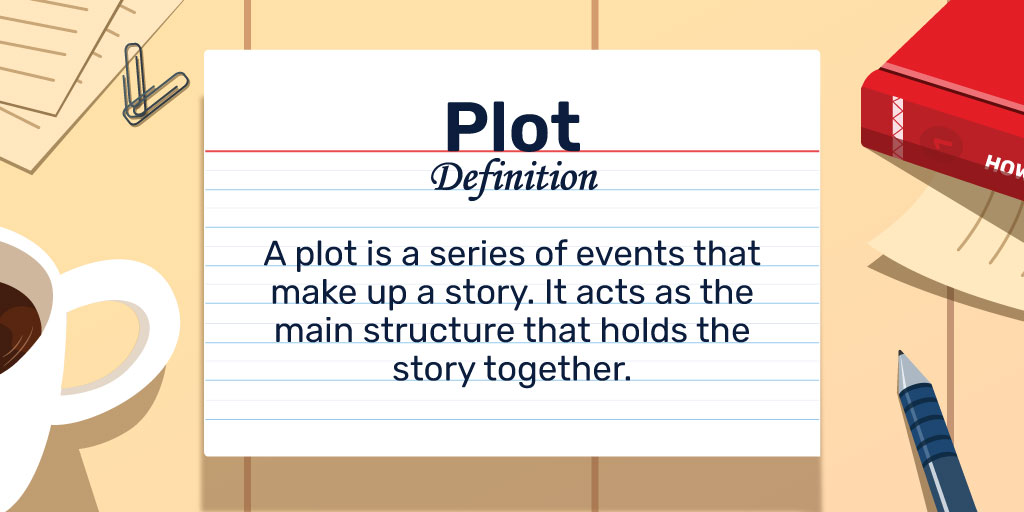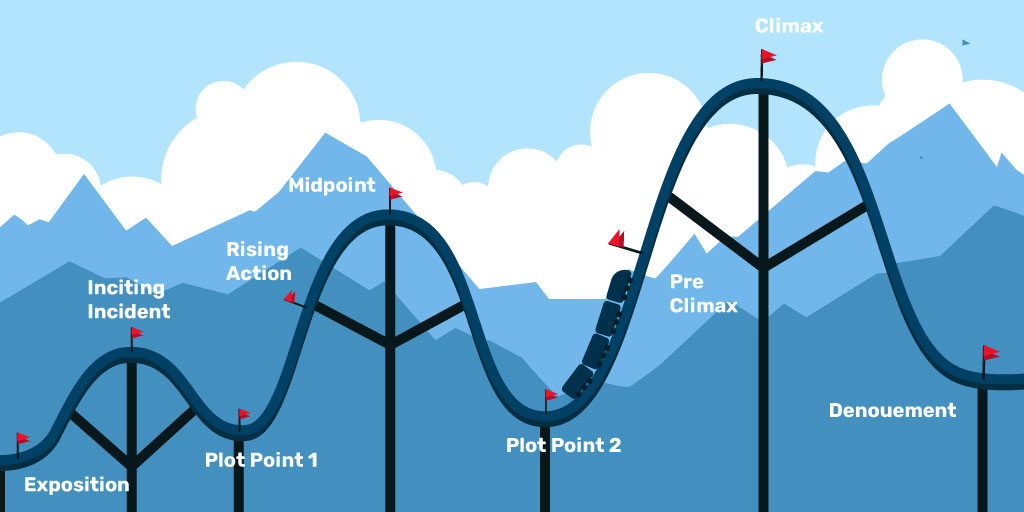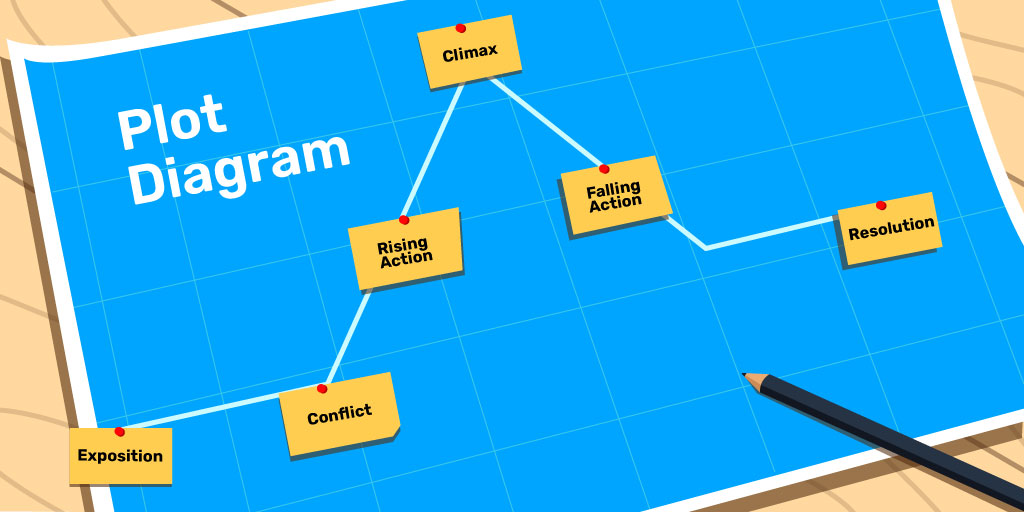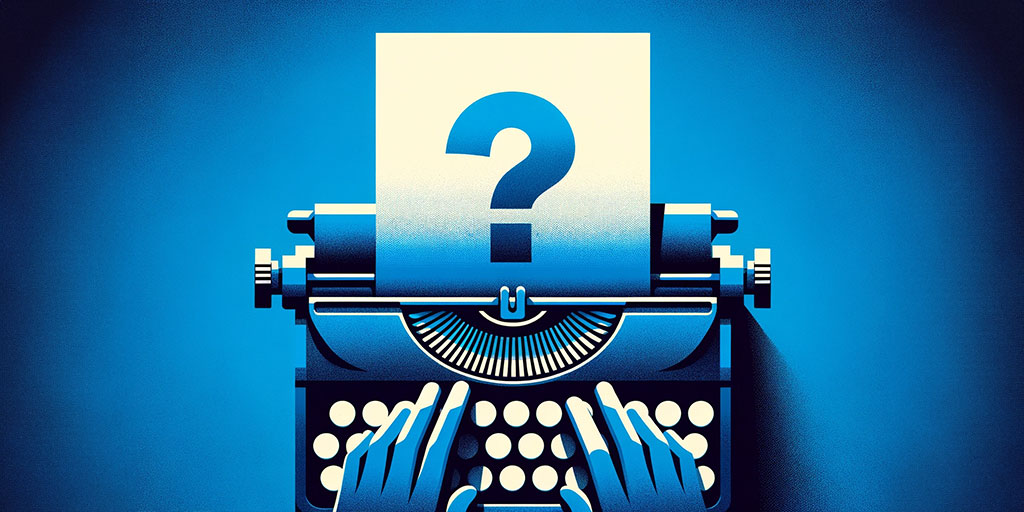As humans, we’ve been telling stories since the dawn of time. At the heart of every great story is a compelling plot that draws us in and keeps us engaged until the very end. But exactly what is a plot, and how does it work?
In this guide, we’ll delve into the essential elements of a story plot. Understanding the mechanics of a great plot will help you take your storytelling to the next level. So let’s dive in and discover what makes a plot truly unforgettable.
What is a Plot? (Definition)
A plot is the sequence of events that make up a story. It is the backbone of storytelling and serves as the framework for the narrative.
A plot typically involves a main character or characters facing obstacles and conflicts, and ultimately resolving them in a satisfying way. It can be driven by action, suspense, romance, or any number of other elements, but at its core, a plot creates a compelling journey for the audience to experience.

In short, a plot is a roadmap that guides a story from beginning to end, and it is the foundation on which all other elements of storytelling are built. To illustrate this principle, here are the plots of some well-known stories:
- Hansel and Gretel: Two siblings get lost in the woods and find a house belonging to a wicked witch who plans to eat them. The children manage to outsmart the witch and escape.
- Little Red Riding Hood: A girl sets out to visit her grandmother and encounters a wolf who tricks her into revealing the old woman’s location. The wolf eats the grandmother, but a hunter saves the girl.
All the details as we know them aren’t present in these plot summaries, but there is a clear series of events that are causally linked. If you have simple ideas like “a wicked witch catches two children” and “a girl encounters a wolf in the woods” you are dealing with story ideas, not plots.
Craft of Writing Quiz (Easy)

Why is a Plot Important?
The most important function of a plot is to provide structure. It enables the author to organize the narrative in a logical, engaging way. It helps create a clear cause-and-effect relationship between events in the story, making it easier for the audience to follow along.
A plot also creates tension and conflict, and it provides opportunities for characters to face obstacles, through which they grow and sometimes succeed. Both these elements keep readers invested in the story. Lastly, a plot can be used to convey deeper messages and create a thought-provoking tale that resonates with the audience.
Story vs. Plot: What’s the Difference?
The plot consists of a series of incidents: everything that the characters experience, including the conflicts and obstacles that they must overcome.
The story, on the other hand, is the overall narrative, including all of the characters, settings, and events that take place. It encompasses everything that happens in the narrative, from beginning to end.
Think of a story as the cake and a plot as the recipe. The recipe provides the instructions for making the cake, including the ingredients and baking time, while the cake itself is the finished product. Similarly, the plot provides the instructions for creating the story, including the sequence of events and the pacing, while the story itself is the finished product.
Elements of a Plot Structure
A plot structure guides the story through a sequence of events that build tension and lead to a satisfying resolution. The structure of a plot can be broken down into several key components, though the structure can differ from one story to another. To see many of the different ways plot elements can be arranged, see our story structure guide.
One of the most common structures is the Freytag’s Pyramid, which we can use to describe the most common elements that appear in most plots.

Exposition
The exposition is the part of the plot in which the characters, setting, and main conflict are introduced. It typically provides background information that helps the audience to understand the story’s context, including the protagonist’s goals and motivations, the story’s setting, and any relevant historical or cultural details.
Rising Action
The rising action is where the main conflict is developed and intensified. This section usually includes complications that make it increasingly difficult for the protagonist to achieve their goal or resolve the conflict. It builds suspense and tension, and it’s the section of the story where the audience becomes more invested in the outcome.
Climax
The climax is the highest point of tension in the story, and the point of maximum interest or emotional intensity for the audience. This is where the protagonist faces the main conflict or obstacle head-on and either succeeds or fails in achieving their goal. It represents the turning point that leads to the resolution.
Falling Action
The falling action is where the tension and conflict begin to decrease, and the consequences of the climax are revealed. Some loose ends are tied up and some remaining subplots or conflicts are resolved.
Denouement
The denouement is the final stage, where the story’s conflicts are fully resolved, and any remaining questions are answered. The protagonist is often shown to have undergone a transformation or growth as a result of their experiences. It usually provides a sense of closure for the audience.
What Is a Plot Diagram?
A plot diagram is a visual representation of the structure of a plot. It usually includes the most common five elements: exposition, rising action, climax, falling action, and denouement. But it can also include other elements in more complex plots.
There are no rules for building a plot diagram. The simplest form is a straight line that shows the story’s progression from the exposition at the beginning of the line, through the rising action, climax and falling action, to the denouement at the end of the line.

The triangle or pyramid shape is the most common type of plot diagram. The exposition is at the base, with the rising action leading upwards to the climax at the peak. The falling action then leads downwards from the climax and runs to the resolution at the base on the other side.
However you decide to draw it, a plot diagram can help you to organize your ideas and ensure that the story flows logically and cohesively. It can also enable you to identify areas of weakness or plot holes that you need to fill, and it will help you to stay focused on the key elements of the plot without going on unnecessary tangents.
11 Popular Examples of Plot
If you’re looking for inspiration, there are many common plots that are used in storytelling that you can adopt and refine. We will describe 11 of these below.
- Rags to Riches
- Man in a Hole
- The Quest
- Revenge
- Pursuit of Love
- Overcoming the Monster
- Coming of Age
- Transformation
- Survival
- Rebellion
- Time Travel
1. Rags to Riches
The protagonist begins in a state of low social or economic status, and through their journey, they attain success, fame, or influence. The idea that anyone, regardless of their background, can achieve success through determination and some luck is a deeply inspirational and uplifting message.
Slumdog Millionaire, for example, features Jamal Malik, who starts as a poor orphan living in the slums of Mumbai and then becomes rich by winning a fortune on the Indian version of Who Wants to Be a Millionaire. Other examples are Cinderella, Forrest Gump, and Aladdin.
2. Man in a Hole
In this plot, the audience follows a protagonist who initially enjoys a good life, only to face unexpected challenges or obstacles that disrupt it. They must then navigate their way through these difficulties to regain their former stability, or find a new sense of balance in their changed circumstances.
Watching a character face and overcome obstacles can be inspiring and uplifting, and readers enjoy the suspense and drama of wondering how and whether the character will overcome their challenges.
This is very well illustrated by The Shawshank Redemption, in which Andy Dufresne starts out as a successful banker with a loving wife, and then is wrongfully convicted of murder and sentenced to life in prison. He must then navigate the challenges and dangers of prison life and ultimately escape to freedom. Other examples are The Hobbit, Breaking Bad, and The Godfather.
3. The Quest
The main character or group of characters sets out on a journey or mission to achieve a goal or find an object. They face obstacles and challenges along the way, but ultimately achieve their goal or learn a valuable lesson.
Audiences like the sense of adventure and exploration this plot creates, and enjoy the suspense of wondering whether the protagonist will be successful in their mission.
The Da Vinci Code by Dan Brown demonstrates this scenario. Protagonist Robert Langdon sets out on a quest to solve a mystery surrounding a secret society and the Holy Grail, facing lots of challenges on the way. Further examples are The Lord of the Rings, Indiana Jones, and The Chronicles of Narnia.
4. Revenge
A character seeks vengeance against those who have wronged them. Sometimes they find that revenge is not as satisfying as they thought it would be, and at other times they are thrilled with the outcome.
When someone has been wronged or harmed in some way, the natural human response is to seek retribution or revenge. This kind of story can provide the audience with a sense of closure and satisfaction. If the harm was inflicted by someone who is more powerful or influential, it also activates the strong impulse to cheer on the underdog.
The Count of Monte Cristo by Alexandre Dumas is the greatest classic of a revenge plot. Protagonist Edmond Dantès is wrongfully imprisoned. After escaping and finding a hidden treasure, he reinvents himself as a wealthy Count and destroys the lives of the people who wronged him. Other examples are Kill Bill, John Wick, and Hamlet.
5. Pursuit of Love
The protagonist falls in love and must overcome obstacles to be with their beloved. Sometimes they are successful, but occasionally they aren’t.
The appeal here lies in the focus on deep-seated human needs and desires, the intricacies of human relationships, and the transformative power of love. It also gives a sense of hope and optimism, as the characters in the story overcome difficulties to find love and happiness.
Bridget Jones’s Diary, for example, follows the life of a woman in her 30s who is looking for love and companionship. Bridget navigates the challenges of modern dating, dealing with the pressures of society’s expectations, and struggling with her own insecurities, all of which are familiar to audiences. On the opposite, decidedly non-humorous side of the spectrum, we find Romeo and Juliet, whose struggles are emotionally captivating but tragic.
6. Overcoming the Monster
This plot features a powerful monster that a character must defeat, with many challenges during the process. In most cases, they triumph, but faithful fans of the horror genre can stomach cases in which the monster is victorious.
Audiences love the triumph of good over evil and the presence of a hero that defeats a powerful and terrifying adversary. Horror fans are also fascinated by the monster itself.
Godzilla includes all these themes, with a monster that emerges from the ocean and wreaks havoc on the city of Tokyo. It also features a hero in the form of Dr. Serizawa, who sacrifices himself by using his weapon to destroy Godzilla, saving the city from further harm. Peter Benchley’s Jaws, Mary Shelley’s Frankenstein, and Stephen King’s It are other popular examples.
7. Coming of Age
The protagonist undergoes a transformation and learns a valuable lesson about growing up. They often start out as naive, but through their experiences, they gain wisdom and maturity.
The appeal of the coming-of-age plot lies in its ability to capture the universal human experience of growing up and finding one’s place in the world, including struggles with identity, independence, and social norms.
The Catcher in the Rye by J.D. Salinger tells the story of a teenage boy who has been expelled from his boarding school and is struggling to find his place in the world. The Karate Kid, To Kill a Mockingbird, and The Perks of Being a Wallflower explore very similar themes.
8. Transformation
Similar to coming-of-age, but with adult characters, a transformation plot features someone who undergoes a transformation in personality or attitude. They often start out as unhappy or dissatisfied with their lives, but through their experiences, they discover a new way of living.
These stories can provide some inspiration and hope for audiences who are struggling with their own personal challenges or limitations.
Fight Club by Chuck Palahniuk describes the journey of the narrator who is disillusioned with his mundane life and becomes involved in a subversive underground fighting club. He undergoes a radical transformation and ultimately learns the shocking truth about the true nature of the club and his own identity. A Christmas Carol, The Matrix, and Beauty and the Beast express this plot too.
9. Survival
A character or group of characters must survive in a harsh or dangerous environment that includes physical or psychological challenges and use their ingenuity to stay alive. It captures the human instinct for self-preservation and resilience in the face of extreme adversity and is packed with suspense.
In Cast Away, for example, Chuck Noland becomes stranded on a deserted island after a plane crash, and must use his resourcefulness to survive. The Walking Dead plays out in a post-apocalyptic world overrun by zombies, The Revenant is set in the wilderness after a bear attack, and Life of Pi puts us on a lifeboat in the Pacific Ocean.
10. Rebellion
In this plot, a character or group rebels against authority or societal norms. The story often involves a struggle for freedom or independence. It is empowering, as it takes audiences on a journey towards freedom and justice.
Braveheart is a great example, as it tells the story of a Scottish warrior who leads a rebellion against the English monarchy in the 13th century, eventually dying as a martyr for the cause. The Handmaid’s Tale, Les Miserables, and The Hunger Games explore the same themes.
11. Time Travel
The name captures it all. Someone travels through time to the past or future. The story often involves changing events in the past to affect the present or future. Audiences are fascinated by ideas of what could have been or what could be, and these stories explore themes around fate, destiny, and the consequences of one’s actions.
Back to the Future provides a thrilling ride through time and space, while The Time Traveler’s Wife explores the complexities of maintaining a relationship with someone who time travels involuntarily.
How to Plot a Story
Now that you understand the nature of a plot and some forms it can take, it’s time to learn some techniques for crafting a compelling one.

1. Generate Story Ideas
There are many strategies for generating ideas. You can draw from personal experience, look at your environment, use writing prompts, read human interest articles in the media, read and watch other stories, or brainstorm on paper.
However you find your basic idea, it must be a good one that is at least somewhat original, is interesting, and contains some kind of conflict.
2. Write a Plot Premise
Transform your story idea into a plot premise. A premise contains a bit more detail than an idea. A story idea is a general concept or premise that could be developed in many different ways, while the plot premise is a more specific outline of the key elements of the plot.
Consider the below examples and try to do the same with yours:
Example 1: Love in a War Zone
- Story idea: A young couple falls in love in a war zone.
- Plot premise: A young couple falls in love in the midst of an invasion by one country of another, but their love is tested when they are forced to choose between their loyalty to their countries and their commitment to each other.
Example 2: Trapped in a Haunted House
- Story idea: A group of strangers are trapped in a haunted house overnight.
- Plot premise: A group of strangers are trapped in a haunted house overnight, and they soon discover that the house is determined to keep them there by killing them one by one.
3. Create a Central Conflict
Creating a central conflict is essential when plotting a story, as it drives the narrative and keeps readers engaged. Here are some suggestions for constructing one:
- Identify your protagonist’s goals: Consider what your main character wants and why it is difficult to achieve or obtain. Be very specific and clear.
- Create obstacles: What stands between the protagonist and their goals? Is it other characters, physical challenges, or emotional hurdles?
- Develop a good antagonist: Decide what will provide a good challenge for the main character. Is it a person, organization, society, natural phenomenon, supernatural creature, time, technology, or inner demons?
- Raise the stakes: Consider what the consequences will be if the character fails to achieve their goals or overcome their obstacles.
- Allow for growth: Decide how the character will evolve over the course of the story as they face their challenges.
4. Pick a Plot Structure
Now that you have your premise and conflict, you should choose a way to structure the plot. Our guide on plot structures provides you with countless ideas.
The most helpful method may be to start with the five-act structure and chart your course in terms of exposition, rising action, climax, falling action, and denouement. You can always change it later if you discover a better way to tell the story.
5. Create a Plot Outline
Develop a plot outline that includes the major plot points of your story and map them onto the structure you have chosen. These will include familiar details like the inciting incident, rising action, climax, falling action, and denouement.
If your ideas are even better formed by now, you can also start to write some scenes that your story will contain. As you go along, you can add detail to this outline until it is detailed enough to serve as a proper guide for writing.
6. Incorporate Subplots
Subplots are secondary storylines that run alongside the main plot. They can add depth to your story and provide additional opportunities for conflict and character development. Sometimes subplots also supply background or context that deepen the audience’s understanding of the main characters and their motivations.
7. Develop Themes
Themes are the deeper messages in your story. Developing themes can help give your story a sense of purpose and meaning, and can tie together seemingly disparate plot points. Think “love conquers all”, “the cost of ambition”, “the impact of trauma”, and their ilk when searching for the themes in your story.
8. Keep it Logical
Every plot point should follow logically from another to create a cohesive and believable story. Accordingly, ensure that each event believably causes the one that follows it. If plot points do not follow logically from one another, the story can become confusing or disjointed, which can break the audience’s immersion and their understanding of the characters’ motivations.
9. Develop the characters
Your characters should be fully realized and have their own motivations, goals, and backstories. Develop them before you start writing your story to ensure that they are fully fleshed out and interesting.
10. Plan the ending
The plot should have a satisfying resolution that ties up all loose ends and provides closure for your audience. Plan your ending carefully to ensure that it is unexpected (but makes sense given the previous course of events) and emotionally satisfying.
11. Fill the Plot Holes
Now that you have a detailed plot outline, examine it carefully to spot unanswered questions, inconsistencies, and characters acting inconsistently with their established personalities. You must fill these holes for your plot to be believable.
Final Thoughts
A plot is the backbone of storytelling that serves as the framework for the narrative. A well-crafted plot can captivate audiences, draw them into the story, and keep them engaged until the end. Ultimately, a well-executed plot can unleash the power of storytelling, leaving a lasting impact on its audience and standing the test of time.
Craft of Writing Quiz (Hard)








